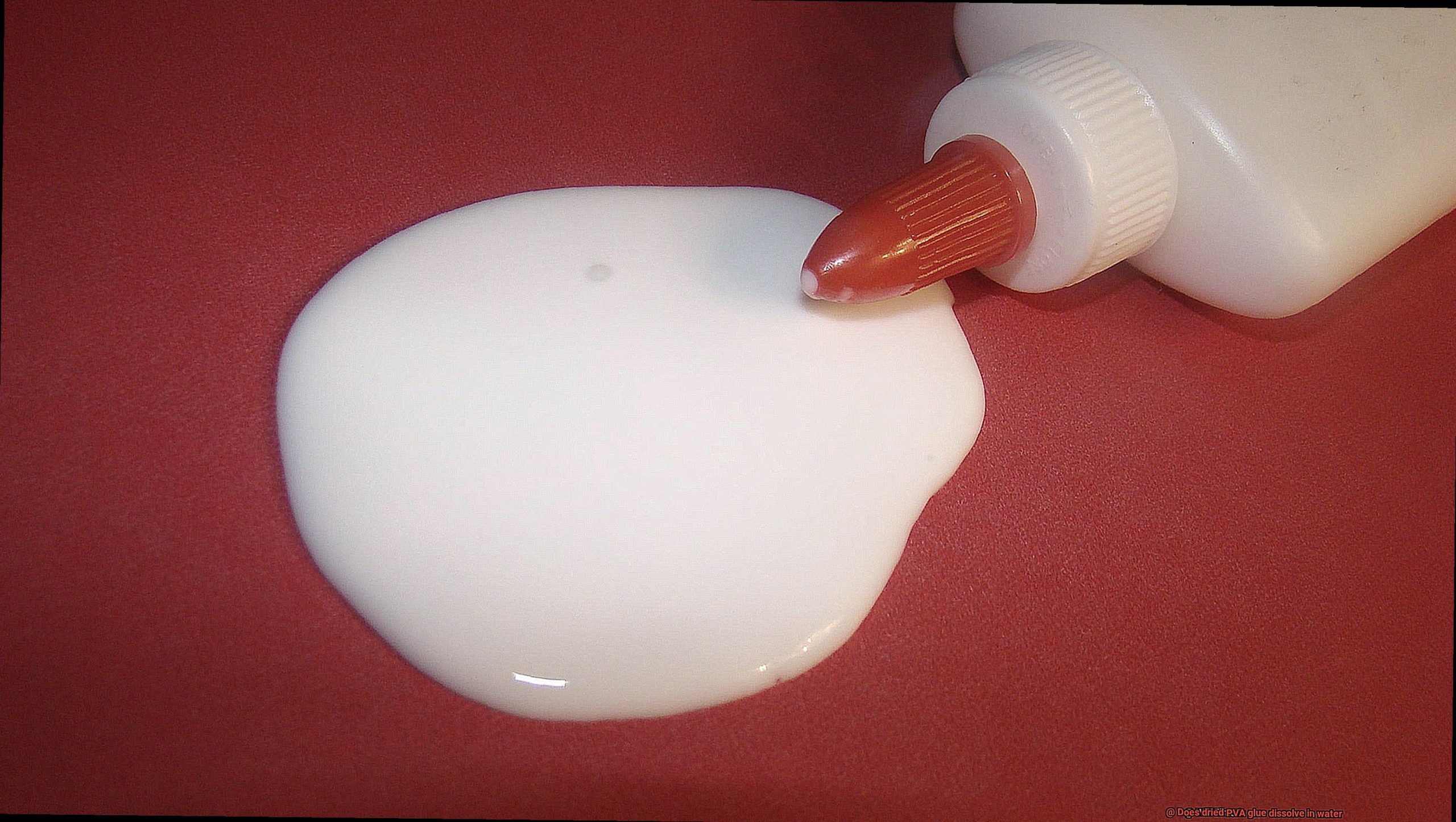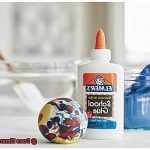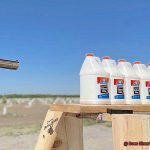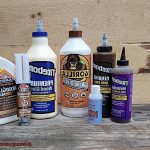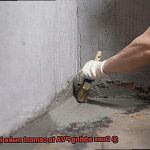Have you ever had a sticky situation where PVA glue has dried on your clothes or other surfaces? It can be frustrating to think that the damage is permanent, but fear not. Did you know that dried PVA glue can actually dissolve in water?
PVA glue is a versatile adhesive used in various industries such as arts and crafts, woodworking, and construction. Its flexibility, durability, and ease of use make it a popular choice. However, once it dries, it forms an insoluble layer that’s hard to remove.
Luckily, there’s still hope. When PVA glue comes into contact with water, it softens and dissolves. But how much the glue dissolves depends on factors like how long it’s been dry, the temperature of the water used to dissolve it, and the type and thickness of surface it was applied to.
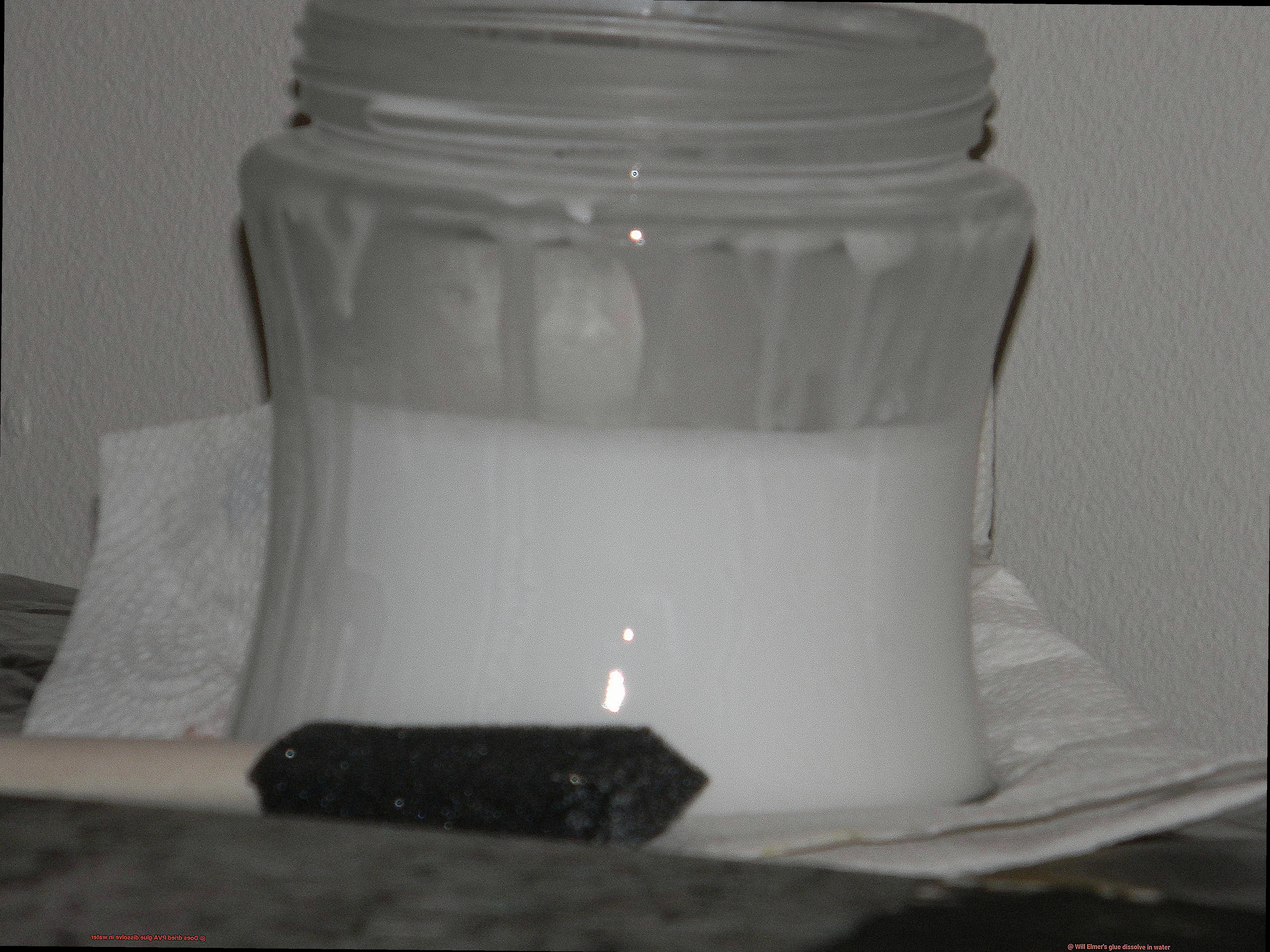
In this article, we’re going to dive deep into the science behind PVA glue and its ability to dissolve in water. We’ll also provide handy tips on how to remove dried PVA glue using common household items. So sit back, relax and let’s uncover whether or not PVA glue really dissolves in water.
Does Dried PVA Glue Dissolve in Water?
Contents
- 1 Does Dried PVA Glue Dissolve in Water?
- 2 Types of PVA Glue and Solubility
- 3 Reasons for Dissolving Dried PVA Glue
- 4 Clean-up and Disassembly Purposes
- 5 Different Varieties of PVA Glue and Their Solubility
- 6 Other Substances That Affect the Solubility of PVA Glue
- 7 Tips for Choosing the Right Type of PVA Glue
- 8 How to Dissolve Dried PVA Glue in Water
- 9 Conclusion
PVA glue, also known as white glue or school glue, is a popular adhesive used in various applications. It is a water-based glue that dries clear and flexible, making it ideal for crafts, woodworking, and home repairs.
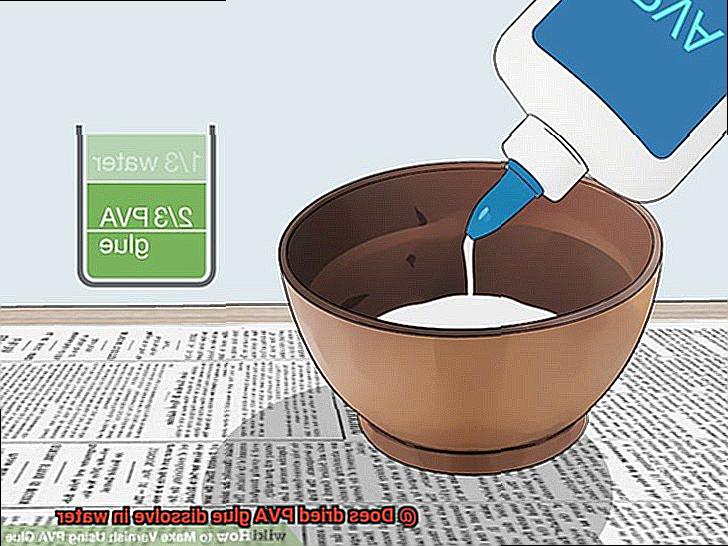
But what happens if you accidentally spill PVA glue or need to remove it from a surface? The answer is simple – just add water. You might be surprised to know that dried PVA glue can dissolve in water. This is because PVA glue is made up of polymer particles that are suspended in water. When the glue dries, these particles form a strong adhesive bond with the surface they are applied to. However, when exposed to water again, these particles can be reactivated, and the glue will dissolve.
It’s worth noting that not all types of PVA glue dissolve in water equally. Some may require more soaking time or agitation to fully dissolve, while others may not dissolve completely at all. Additionally, if other substances have been added to the glue (such as glitter or paint), this can affect its solubility in water.
The speed and efficiency of the dissolution process also depend on factors such as the thickness of the glue layer, the temperature of the water and the duration of soaking. Thicker layers of dried PVA glue may require more soaking time or agitation to fully dissolve.
Knowing that dried PVA glue can dissolve in water is useful for anyone who works with this type of adhesive. It allows for easy clean-up and removal but also means that any objects or surfaces bonded with PVA glue should not be exposed to moisture or water.
Types of PVA Glue and Solubility
PVA glue, also known as polyvinyl acetate glue, is a popular adhesive that is used in a wide range of applications. Its versatility, easy-to-use features, and strong bonding properties make it a go-to option for woodworking, paper crafts, and even textile projects. However, not all PVA glue is the same. There are different types of PVA glue available in the market, each with varying properties and solubility.
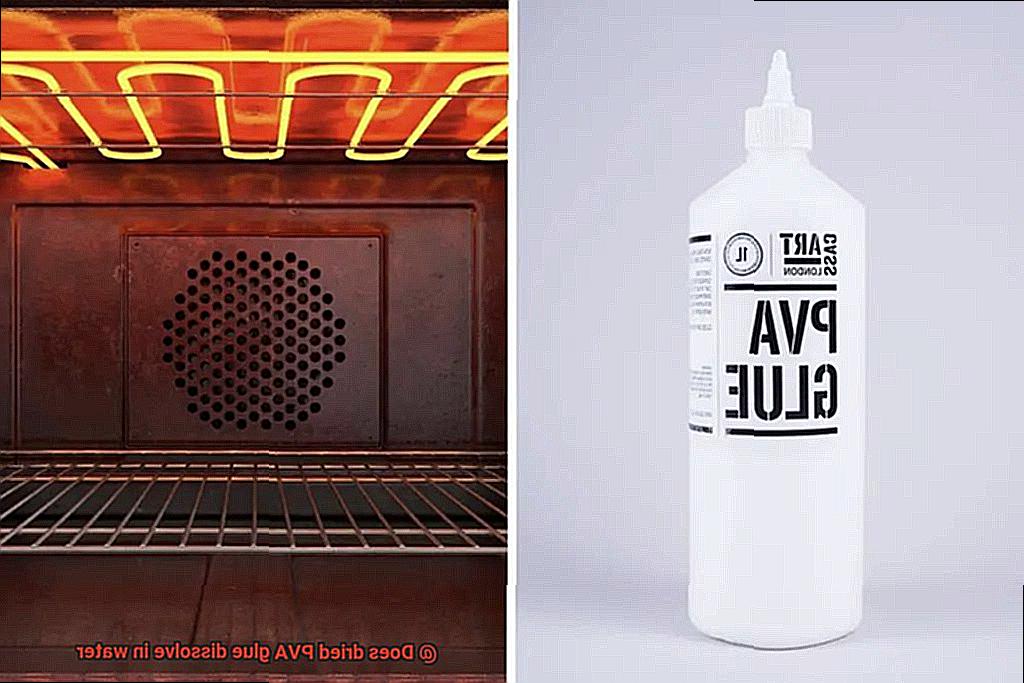
One of the most common types of PVA glue is white glue, also known as school glue or craft glue. This type of glue is water-soluble, which means it can easily dissolve in water when wet. This property makes it an excellent option for projects that require disassembly or clean-up after use. Once it dries, it forms a solid and strong bond between surfaces. However, if it gets wet again, it can re-dissolve and lose its adhesive properties.

Yellow glue or carpenter’s glue is another type of PVA glue that has stronger bonding properties than white PVA glue and is more resistant to moisture. While yellow PVA glue is also water-soluble, it requires more effort to dissolve than white PVA glue. This type of glue is an excellent choice for projects that require a stronger bond and moisture resistance.
Specialized types of PVA glues are also available for specific applications. Waterproof PVA glue has added agents that make it resistant to water and moisture, making it ideal for outdoor applications. This type of glue works well for boat building or other projects that will be exposed to wet environments. Solvent-based PVA glue contains solvents that help it dry faster and create a stronger bond than regular PVA glues.
The solubility of dried PVA glue in water depends on the type of PVA glue used. For instance, standard PVA glue that dries clear and water-resistant may not dissolve easily in water. Conversely, school or washable PVA glue dissolves quickly in water. Knowing the solubility properties of the PVA glue you choose is essential to ensure a successful project. By selecting the right PVA glue for your project, you can achieve a strong and long-lasting bond.
Reasons for Dissolving Dried PVA Glue
Dissolving dried PVA glue in water is a common practice for many artists and crafters. Whether it’s for cleaning up a mess, making repairs, or reusing leftover glue, there are several reasons why someone might want to dissolve dried PVA glue. In this article, we will explore the factors that contribute to the ability of dried PVA glue to dissolve in water.
Chemical Makeup of PVA Glue:
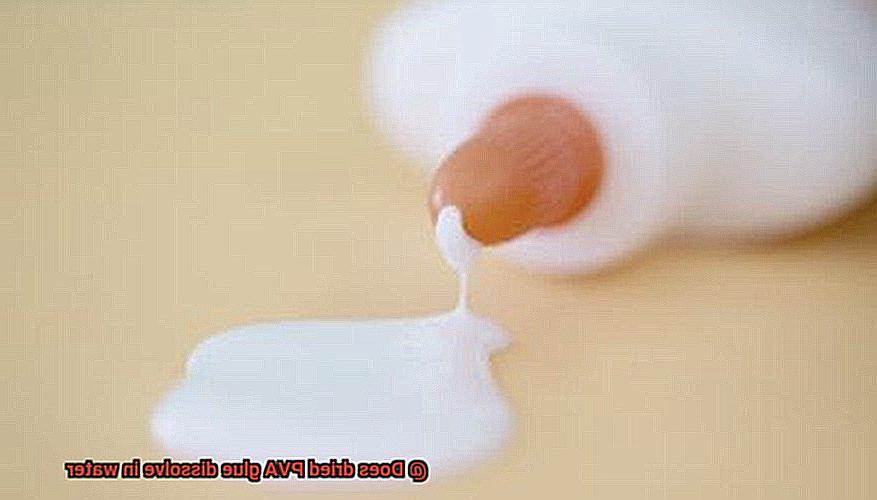
One of the primary reasons why dried PVA glue dissolves in water is due to its chemical makeup. PVA, or polyvinyl acetate, is a synthetic polymer that is water-soluble. When PVA glue is wet, it forms a dispersion of tiny particles in water. These particles are held together by weak hydrogen bonds, which can be broken down when the glue is exposed to water. Therefore, when dried PVA glue comes into contact with water, these bonds are weakened, causing the glue to dissolve.
Cross-Linked Adhesive:
Another factor that contributes to the solubility of dried PVA glue in water is its structure as a non-cross-linked adhesive. Cross-linked adhesives, such as epoxy and cyanoacrylate (super glue), are designed to form a strong, permanent bond that cannot be easily broken down. However, PVA glue does not form a cross-linked structure when it dries. Instead, it forms a network of polymer chains that can be easily separated when exposed to water.
Porous Surfaces:
The porous nature of many surfaces that PVA glue is used on can also contribute to its ability to dissolve in water. When PVA glue is applied to a surface, it seeps into the tiny nooks and crannies and forms a bond with the material. However, this bond can be weakened when exposed to water, which can penetrate the surface and break down the adhesive.
Temperature of Water:
The temperature of the water also plays a significant role in the ability of dried PVA glue to dissolve in water. Hot water is more effective than cold water in dissolving the glue. However, boiling water could damage some materials or cause the glue to break down too much.
Patience:
Finally, it’s essential to be patient when dissolving dried PVA glue in water. Depending on how much glue you’re trying to dissolve and how thick it is, it could take anywhere from a few minutes to several hours. Therefore, it’s crucial to give the glue enough time to dissolve fully before attempting to strain out any solid bits of glue that don’t dissolve completely.
Clean-up and Disassembly Purposes
However, there is a simple solution to this pesky problem – water. That’s right, dried PVA glue can dissolve in water, making clean-up and disassembly a breeze.
For clean-up purposes, start by soaking the affected area in warm water for a few minutes until the glue softens. Then, use a damp cloth or sponge to wipe away the glue. If there are any stubborn spots, gently scrub them away with a soft brush.
But what about disassembling glued objects? No worries, you can still utilize the power of water. Soak the glued objects in warm water until the glue softens, and then carefully pull them apart. Keep in mind that this method may not work for all materials or surfaces. For instance, wooden or porous objects may be damaged by soaking in water. It’s always best to exercise caution and research before attempting to disassemble glued objects made from these materials.
Different Varieties of PVA Glue and Their Solubility
First on the list is white school glue, a versatile adhesive for paper, fabric, and other porous surfaces. This type of glue dries clear, has a low odor, and is easy to clean up with water. It’s soluble in water when wet and retains its adhesive properties when dry. Plus, if you need to make adjustments to your project after it’s dry, you can reactivate the glue with water.
Next up is yellow carpenter’s glue, also known as wood glue. This type of PVA glue is stronger than white school glue and is perfect for woodworking projects. It dries to a yellowish color and has higher resistance to water than white school glue. Unlike white school glue, yellow carpenter’s glue is not soluble in water when dry. This makes it an excellent choice for outdoor projects or items that may come into contact with moisture.
If you need some flexibility in your adhesive, flexible PVA glue is the way to go. This type of glue has added ingredients that give it elasticity when dry. It’s perfect for projects that require some movement or bending without losing its grip. Like yellow carpenter’s glue, flexible PVA glue is also not soluble in water when dry.
Lastly, there are specialty PVA glues that have unique properties like waterproofing or heat resistance. These types of glues may or may not be soluble in water once they dry. Specialty PVA glues are ideal for specialized projects such as jewelry making or creating outdoor decorations that need to withstand the elements.
Other Substances That Affect the Solubility of PVA Glue
Water isn’t the only factor at play when it comes to PVA glue’s solubility.
Let’s explore some of these factors in more detail. First up, temperature – exposing PVA glue to high temperatures can make it less soluble in water. The heat causes the polymer chains in the glue to pack more tightly together, making it harder for water molecules to penetrate and dissolve the glue. So, if you’re working with PVA glue in a warm environment, keep an eye on its solubility.
Next on our list is pH level – PVA glue is most soluble in a slightly acidic solution with a pH level between 4 and If the pH level is too high or too low, it can cause the glue to become less soluble. To ensure optimal performance, check the acidity of your solution before using PVA glue.
Salt concentration is another crucial factor that affects PVA glue’s solubility. When dissolved in a high salt concentration solution, PVA glue becomes less soluble. The salt ions interfere with the hydrogen bonding between the polymer chains in the glue, making it more difficult for water molecules to dissolve the glue.
And finally, we have organic solvents such as acetone and ethanol. These substances can dissolve PVA glue but may also cause it to lose its adhesive properties or become too thin to use effectively. So, if you plan on using organic solvents and PVA glue together, exercise caution and be mindful of their effects.
Tips for Choosing the Right Type of PVA Glue
When embarking on a DIY project, selecting the right type of PVA glue can make all the difference. Here are five factors to consider before making your choice:
Project Type
Before selecting your PVA glue, consider the type of project you will be working on. Different types of glue have varying strengths and properties that make them more suitable for certain tasks. For instance, if you’re working on a woodworking project that requires high strength, choose an exterior or carpenter’s PVA glue that can withstand outdoor elements and provide a strong bond.
Strength and Durability
If your project will be exposed to moisture or heat, opt for a waterproof or heat-resistant PVA glue that can ensure the longevity of your project. These types of glue tend to hold up better over time, making them ideal for projects that require long-lasting durability.
Bond Strength
Consider whether you need a temporary or permanent bond for your project. Some types of PVA glue are designed for a temporary bond and can be easily removed or repositioned, while others provide a strong permanent bond that is difficult to break. Selecting the right bond strength is essential in ensuring that your project stays intact as desired.
Drying Time and Color
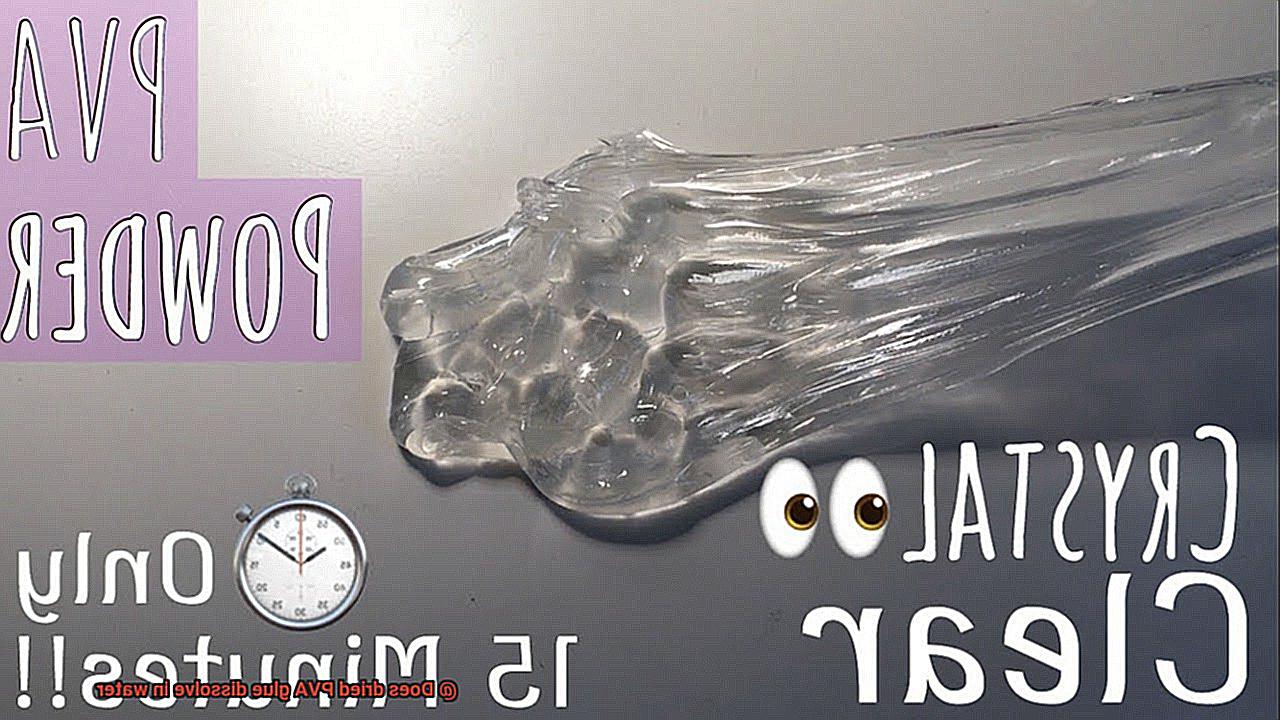
The drying time and color of PVA glue can also impact the outcome of your project. Choose a type of glue that fits within your timeline and has the desired color finish. Some types of PVA glue dry clear, while others may have a slight yellow tint. Additionally, some types of PVA glue may take longer to dry than others, which can affect your overall project completion time.
Safety
If you’re working with children or in an enclosed space, prioritize safety by selecting non-toxic and washable PVA glue that is easy to clean up. This will ensure that everyone involved in the project is safe and that the cleanup process is hassle-free.
How to Dissolve Dried PVA Glue in Water
PVA glue is a popular adhesive used in woodworking, paper crafts, and DIY projects. It is water-soluble when wet, but what happens when it dries? If you have dried PVA glue on a surface or object, it may not dissolve easily in water. However, there are methods you can try to break down the bond and make it easier to remove.
Understand PVA glue
To dissolve dried PVA glue in water, it’s important to understand the properties of both the glue and the water. PVA glue, also known as white glue or school glue, is a water-based adhesive that dries to form a strong bond. However, when exposed to moisture, the glue can soften or dissolve.
Soak in warm water
One method is to soak the affected area in warm water for several hours or even overnight. Warm or hot water can help speed up the process of dissolving the glue, while cold water may take longer. It’s also important to use enough water to fully submerge the dried glue.
Use vinegar or rubbing alcohol
Another option is to use vinegar or rubbing alcohol. These substances can help break down the glue and make it easier to dissolve in water. Apply the vinegar or rubbing alcohol to the affected area and let it sit for several minutes before attempting to dissolve the glue in water. Mix equal parts warm water and white vinegar in a bowl or container, then soak the dried glue in the solution for several hours.
Consider age and surface
It’s important to note that some types of PVA glue may be more difficult to dissolve than others. Additionally, the age of the glue and the surface it is on can also impact how easy it is to dissolve. If you are unsure of how to proceed, it may be best to consult a professional or seek out specific instructions for your particular situation.
Be patient and gentle
When dissolving dried PVA glue in water, it’s important to be patient and gentle. Avoid using harsh chemicals or abrasive tools that could damage the surface underneath the glue. After soaking, gently scrub the area with a soft-bristled brush to remove any remaining residue.
RTS_hPXzrBk” >
Also Read: Will Elmer’s glue dissolve in water?
Conclusion
To sum up, dried PVA glue can indeed dissolve in water, thanks to its chemical composition as a non-cross-linked adhesive. However, the time it takes for this to happen depends on several factors, including the type of glue used, layer thickness, water temperature and duration of soaking. Being aware of these variables is crucial for anyone working with PVA glue to achieve optimal results.
There are different types of PVA glue available on the market, each with varying properties and solubility levels. White school glue is easily cleaned up with water when wet and is water-soluble. Yellow carpenter’s glue has stronger bonding properties than white PVA glue and is more resistant to moisture but requires more effort to dissolve in water when dry.
Dissolving dried PVA glue in water can be useful for cleaning purposes or disassembling glued objects. However, caution must be exercised when working with organic solvents or exposing materials or surfaces bonded with PVA glue to moisture or water.
Choosing the right type of PVA glue involves considering various factors such as project type, strength and durability, bond strength, drying time and color, and safety.

